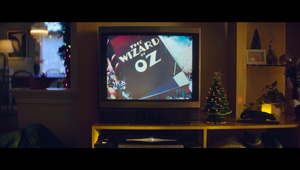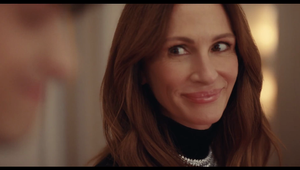
5 Minutes with… Sam Taylor-Johnson

As a kid growing up in a commune, creativity and imagination was a means of order for Sam Taylor-Johnson. Today, it's her craft.
Sam is a director known most recently for 'Back to Black', the 2024 movie that follows the life and music of Amy Winehouse. She also broke records in 2015 for the biggest opening for a female director for her adaptation of Fifty Shades of Grey.
Originally a sculptor, she began working in photography, film, and video in the early 1990s, alongside fellow young British artists Damien Hirst and Tracey Emin. She exhibited at Venice Biennale in 1997, winning the Illy Café Prize for Most Promising Young Artist, and receiving a Turner Prize nomination in 1998.
Sam is represented by Superprime. Her short form work includes clients such as Givenchy, H&M and Chanel, as well as music videos for artists including The Weeknd, Elton John and R.E.M..
LBB's Addison Capper chatted with Sam about the process of shooting 56 locations in 45 days for Back to Black, and how her fine art past informs her moving image work today.
LBB> What kind of kid were you? And when do you feel you first truly began exploring your creativity?
Sam> I was a hippy kid living in a commune environment constantly dreaming of another life which had order and less chaos. My creativity was always in my imagination. I was a dreamer, still am. I would always walk looking high up into the sky and telling myself stories.
LBB> You were a fine art photographer before turning your hand to moving images. How would you summarise that early work and how do you feel it has shaped the type of work you excel at today?
Sam> My early work as an artist was a path to finding my voice. I knew it was there but didn’t know quite how to use a medium to get it out. When I discovered photography, it was like an inner door opened and from there, I could release all these thoughts of who I was in the world. My work today has the same voice but it’s been honed and the craft of photography and filmmaking is something I have used to continue to give space to my ideas. Sometimes the telling of stories frees me to explore moments of imaginative freedom that can give light to big ideas.
LBB> What's a key lesson you learned during that time that still serves you well today?
Sam> A key lesson for sure is that my voice is unique and that I need to trust in what I am saying visually. Often, self-doubt can inhibit an idea and its path into the world, so I tend to sit with my thoughts, find the best light in which to project them, and if they are strong, I will push them with as much investigation and detail as I can. When I say investigation, I mean to really go to the root of what the idea is but as well to allow its path through me.
LBB> How did you get into photography and filmmaking? Was it quite a conscious thing or more a happy accident?
Sam> I started in sculpture at art school and I couldn’t quite work out what my work was saying. I loved photography and I was obsessed with cinema and cinematography but because I hadn’t trained in those fields I didn’t know how to begin. I didn’t have money nor did I come from money. My cousin, who was a petty thief, stole a camera and gave it to me. It was a Canon and it opened up my world. I realised that taking pictures was natural to me because I had devoured so much photography.
LBB> Tell me about Back to Black. What were your initial thoughts when this project came about? And why was it something you were keen to do?
Sam> Back to Black felt like a gift from the moment it was floated as an idea to me. I sat with Matt Greenhalgh (the writer), and we outlined our thoughts on what the movie should be and how it should celebrate Amy Winehouse and not continue down the path of her life just being about the tragedy of what happened to her - rather to celebrate her, for her music and creative voice. To be able to work with her music catalogue and all the great artists that inspired her was exciting. I love music, her music, and making a movie which has so much was a great joy.
LBB> What kind of relationship did you have with Amy Winehouse and her music prior to the project? And what was the process like of delving very deep into her life?
Sam> I never met Amy but I connected with her in the sense that I felt I could see who she was through her lyrics and the stories she told in them. I grew up in London and lived in her neighbourhood so I felt the texture of some aspects of her life were familiar. Delving deep into her life was intense, there was a lot to take on board.
LBB> There are also many scenes that would have originally played out behind closed doors, in private. What kind of challenges did these conjure up?
Sam> For these behind-the-scenes moments, I would read her lyrics and watch as many interviews as I could to create what the scene felt like it needed to say. What we dramatically needed to see and hear to move us to the next part of her narrative but holding to the essence of her.
LBB> You shot in 56 locations in 45 days. How did you pull the whole thing off? What were some key locations?
Sam> Ha ha, It was a crazy schedule, but I get very laser-focused. I know what I need to see and how it should be played, so the challenge is mostly fun. However, the biggest challenge was the healthy interest from the paparazzi, who would often slow us down as they tried to infiltrate the set!
LBB> What aspect of filmmaking do you like best? And why?
Sam> I love being on set and working with the actors. Just to bring scenes and moments alive feels like magic.
LBB> Outside of your work, what keeps you happy, occupied and grounded?
Sam> My husband, my kids and the countryside.















